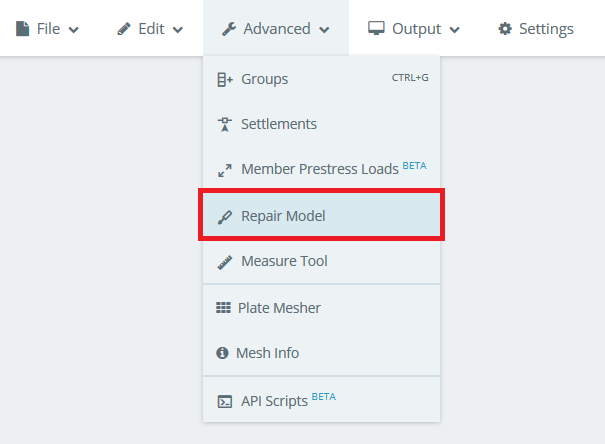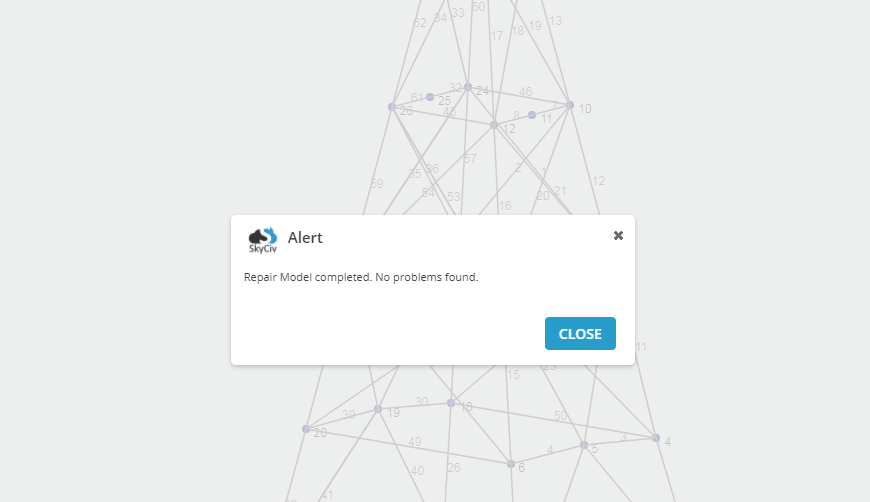Funzionalità del modello di riparazione automatica per aiutarti a rilevare e riparare i problemi nel modello
La funzione del modello di riparazione offre una serie di funzioni utili che possono aiutare a correggere il tuo modello. Questi sono generalmente separati in funzioni per i nodi, aste, e piatti. Attualmente, Skyciv esegue i seguenti controlli sul tuo modello:
Unused nodes– Modello di scansione per nodi galleggianti e disconnessiDuplicate Nodes, Members and Plates– Modello di scansione per elementi duplicati che possono causare il doppio della quantità di rigidità nel modelloLarge Structure– Rileva membri estremamente snelli (utilizzato per rilevare i problemi dell'unità)Merge nodes– Unisci i nodi chiusi con una tolleranza in base all'input dell'utenteZero members– Rileva i membri che hanno lo stesso nodo iniziale/fineContinuous-to-Normal Members– Rileva i membri con nodi intermedi. Cambia questi membri in “continuo” Per collegare i nodi intermediIntersecting Members– Rileva e collega i membri intersecantiDefault Section– Trova membri senza dati di sezione, Aggiungi una sezione predefinitaForce Plate Mesh– consentire l'analisi di funzionare senza che le piastre vengano in mischiaReasonability Check– controlla che l'input del modello è in un intervallo ragionevole. Ad esempio, Rilevamento di membri lunghi 500 m, Il modulo di Young è troppo basso/alto, eccetera…
Puoi accedere al Modello di riparazione caratteristica in qualsiasi momento andando alla barra degli strumenti superiore e trovando il Modello di riparazione funzione sotto Avanzate. Tuttavia, Modello di riparazione eseguirà automaticamente ogni volta che si risolve per assicurarsi che la struttura sia stata controllata prima di risolvere.

Le opzioni disponibili per la funzione del modello di riparazione sono mostrate di seguito.


Una nota sulle piastre non magnetiche
Le piastre non messe possono causare forze di piastra interne imprecise e sono fondamentali se si sta cercando di analizzare qualsiasi forze di piastra usando il solutore FEA di Skyciv. La funzione del modello di riparazione scansionerà il tuo modello per qualsiasi piastra che non è stata intrecciata e avviserà l'utente di alcuna piastra non magnetica. L'utente ha quindi la possibilità di ignorare tali piastre (Supponiamo che siano mesh) per riparare questo problema nel modello.


